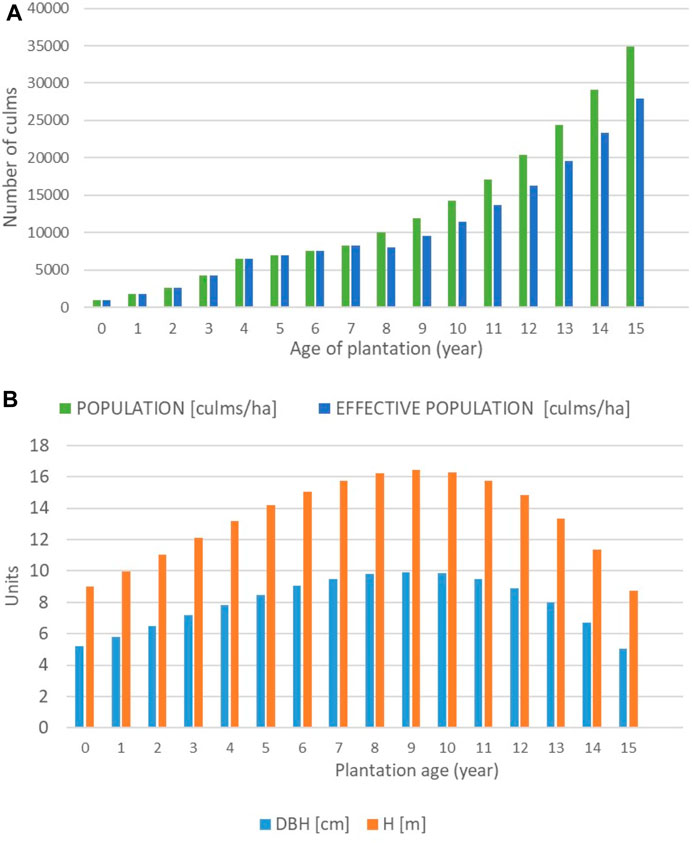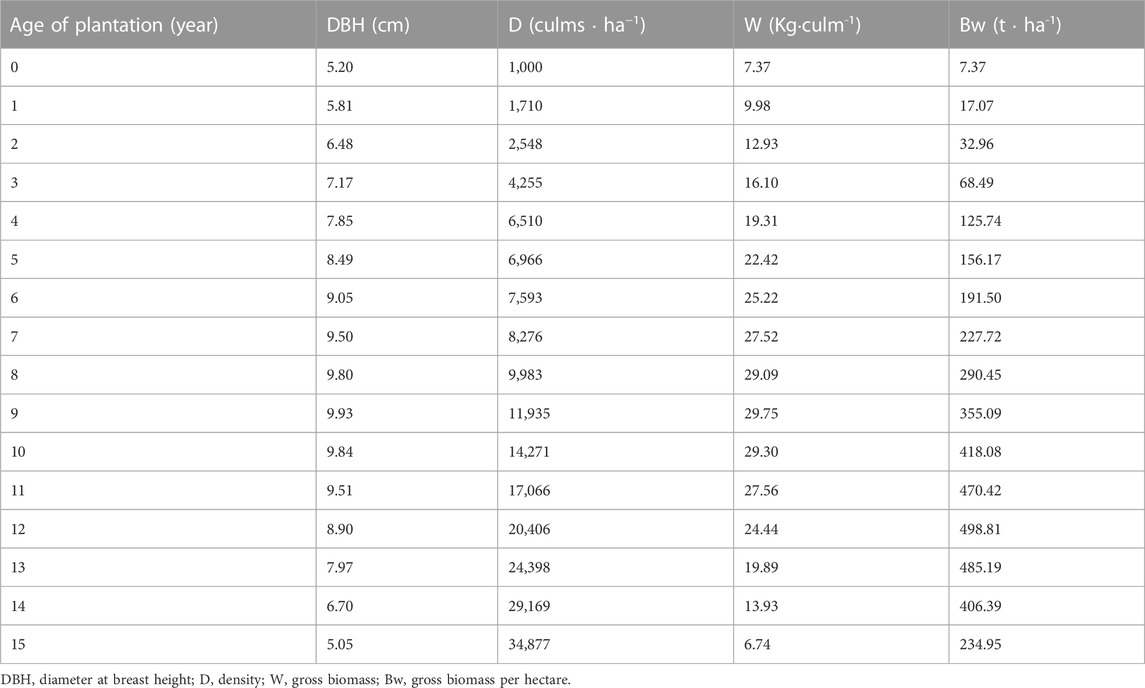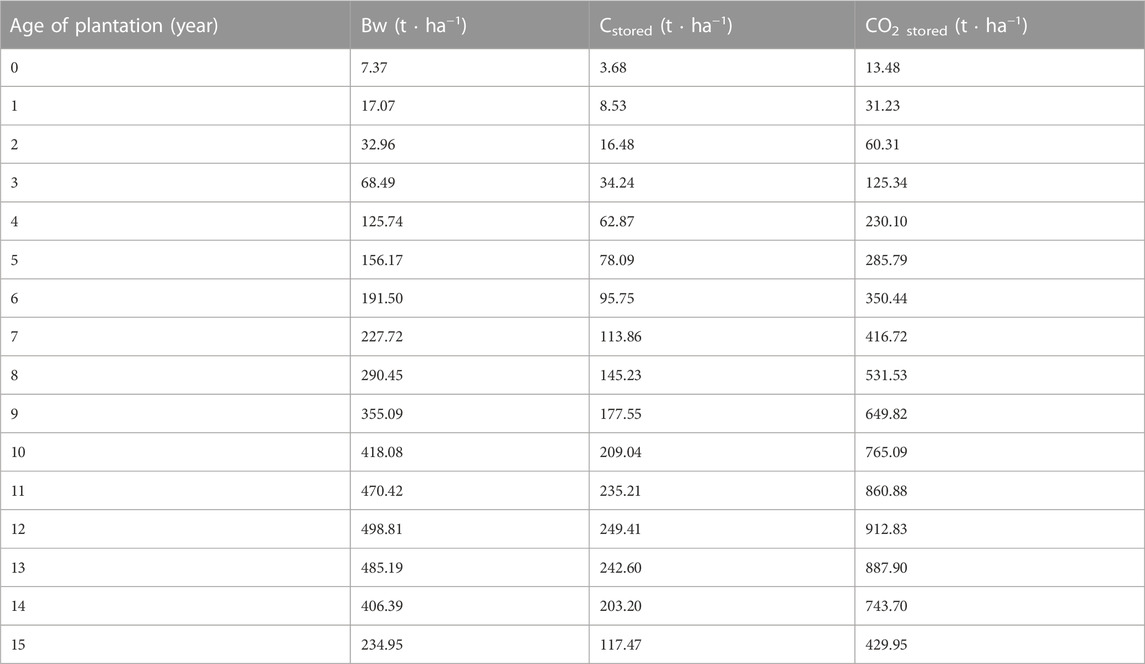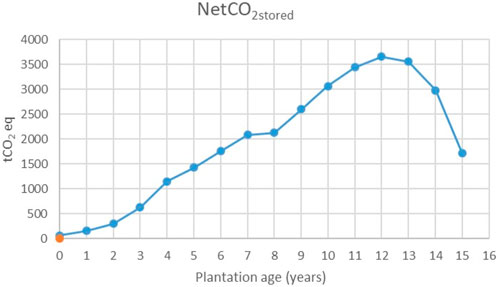
95% of researchers rate our articles as excellent or good
Learn more about the work of our research integrity team to safeguard the quality of each article we publish.
Find out more
CORRECTION article
Front. Environ. Sci. , 20 June 2023
Sec. Atmosphere and Climate
Volume 11 - 2023 | https://doi.org/10.3389/fenvs.2023.1127456
This article is a correction to:
Suitability and Eligibility of Phyllostachys pubescens (Moso Bamboo) Afforestation for GHG (Greenhouse Gases) Projects: Case Study in Central Italy
A Corrigendum on
Suitability and eligibility of Phyllostachys pubescens (Moso Bamboo) afforestation for GHG (greenhouse gases) projects: case study in central Italy
by Vadalà R, Cicero N, Dugo G and Costa R (2022). Front. Environ. Sci. 10:817177. doi: 10.3389/fenvs.2022.817177
In the published article, there was an error in Affiliation 2. The correct affiliation appears above.
In the published article, the following reference “Kuehl, Y., Li, Y., Henley, G. (2013). Impacts of selective harvest on the carbon sequestration potential in Moso bamboo (Phyllostachys pubescens) plantations. Forests, Trees and Livelihoods, 22, 1-18, doi.org/10.1080/14728028.2013.773652.” was not cited in the article. The citation has now been inserted in sub-section “Development of computational model” and in References and should read:
“For the quantification of the gross above ground biomass (W), the following equation (Kuehl et al., 2013) was applied.”
In the published article, there was an error in the legend for Figure 2A as published. The original legend of the figure consisted of three labels: Density (culm/ha), Population and Effective population. This was redundant and unclear, so the legend was reduced to two entries. The corrected legend and figure appear below.
In the published article, there was an error in the legend for Figure 2B as published. The original legend of the figure consisted of two labels: DBH (cm) and H (corrected) (m). This last one has been replaced with H [m] because, in the revision of the computational model (which is proposed in this corrigendum), the corrective factor has not been used anymore (C = 0.32). The corrected legend and figure appear below.

FIGURE 2. (A) Pattern of culm change during a timeframe of 15 years. Population: total number of bamboo individuals. Effective population: number of culms net of the cut fraction; (B) Culm changes in the time interval 0–15 years of bamboo plantation development. DBH, diameter at breast height; H, culm height.
In the published article, there was an error in Figures 2A, B as published. In Figure 2A, the histogram represented the trend of three field parameters (density; population and effective population) over a 0–16 year period. This histogram has been corrected: the timeframe considered has been reduced to 0–15 years, also the values of only two field parameters have been reported: the population (culms/ha) and the actual population net of the cuts expected from the eighth year. This choice was made to make the histogram content clearer to readers. In Figure 2B, the histogram showed the trend of allometric parameters [DBH = diameter breast height (cm) and H culm height (m)] over the 0–16 year period. This histogram has been corrected: the time frame considered has been reduced to 0–15 years. Moreover, the DBH and H values reported in the histogram were obtained respectively by the equations proposed by INBAR protocol (Guomo et al., 2013). In particular, according to Kuehl et al., (2013) for the determination of H values the corrective factor (C = 0.32) has not been used anymore. Finally, for the sake of clarity, the scale of values on the y-axis has been corrected with units without decimal places. The corrected Figures 2A, B and its caption appear below.
In the published article, there was an error in Table 1 as published. The values reported in Table 1 were recalculated because there was a formatting error in the formula that was used for the determination of W = gross biomass. This error influenced also the Bw values obtained. In particular, the incorrect formula used for calculating W was as follows:

TABLE 1. Correlation of diameter (DBH) and density (D) with the amount of gross biomass above-ground of the entire plantation (W) and of each unit of land (Bw).
Then, according to Kuehl et al., (2013), the gross biomass W was recalculated by the correct formula which is the following
Thus, the Bw (gross biomass per hectar) was recalculated, using the correct annual values of W and with the following original formula
Finally, the time frame considered has been reduced from 0–16 years to 0–15 years. The corrected Table 1 and its caption appear below.
In the published article, there was an error in Table 2 as published. The values reported in Table 2 were recalculated because they were influenced by the formatting error in the formula for the determination of W which was extensively explained in the previous point. The corrected Table 2 and its caption appear below.

TABLE 2. Gross biomass above-ground (Bw), amount of carbon and of carbon dioxide stored in the above-ground biomass (Cstored and CO2 stored).
In the published article, there was an error in Figure 3 as published. The error in the formula for calculating the W that was already exhaustively described in previous paragraphs, influenced the values that were reported in the diagram of Figure 3. In fact, the curve showed the net carbon dioxide fraction segregated by the entire moso bamboo plantation after subtraction of the aliquot stored in the cut fraction (20% above ground biomass). Using the correct formula, the maximum amount of captured CO2 was predicted to be reached on the 12th year (∼3651.32 ca. tCO2e). Therefore, other corrections were necessary: i) the range of values represented by the curve has been reduced from 0–16 years to 0–15 years; ii) According to the results achieved by applying the corrected formula, the range of values reported on the y-axis was reduced from 0–30000 tCO2eq to 0–4,000 tCO2eq. The corrected Figure 3 and its caption appear below.

FIGURE 3. Net carbon dioxide fraction segregated by the entire Moso bamboo plantation after subtraction of the aliquot stored in the cut fraction (20% above-ground biomass).
In the published article, there was an error in Supplementary Table S2. The values reported in Supplementary Table S2 were recalculated because they were influenced by the formatting error in the formula for the determination of W which was extensively explained previously. Finally, the time frame considered has been reduced from 0–16 years to 0–15 years. The correct supplementary material appears in the original article.
In the published article, there were errors in the Abstract. The corrected passages appear below.
A range of 16 years was too long, and it was preferred to align with the timeframe reported in the literature. Therefore, the timeframe considered has been reduced from 0–16 years to 0–15 years. The corrected sentence appears below:
“In order to evaluate CO2 capturing potential, a computational study was developed and applied to the bamboo field to predict and quantify the tons of CO2 equivalent annually sequestered, during a project range of 15 years.”
Additionally, there was a formatting error in the formula that was used for the determination of W = gross biomass. This error influenced consequently all the calculated values, thus also the highest segregation power of the bamboo plantation. The corrected sentence appears below:
“The highest segregation power of the bamboo plantation equated 3651.32 tCO2e · yr−1, segregated by the whole field in the 12th year (out of a total timeframe of 15 years).”
In the published article, there was an error in section Case study: the co2 sequestration capacity of a moso bamboo field. The corrected sentence appears below:
“The model has been processed and applied to the bamboo field in order to evaluate CO2 capturing potential, and to predict and quantify the tons of CO2 equivalent annually sequestered, during a project range of 15 years.”
In the published article, there were errors in section Case study: the co2 sequestration capacity of a moso bamboo field, subsection Development of Computation Model. The corrected passages appear below:
“After the seventh year (age of plant’s maturity), the predictive model must take into account an annual cutting intervention that is estimated to remove 20% of mature plants.”
Additionally, in the formula for the determination of the height of the culms, the diameter of breast height (DBH) was erroneously indicated with D, this must be corrected because in the work (D) corresponds to the density of field. Moreover, as specified above, the range of observation must be reduced to from 16 to 15 years, then the correct period is 2016–2031. The corrected sentence appears below:
“For the determination of allometric parameters, namely the average diameters (DBH, diameter at breast height) and heights, of the Moso bamboo population during the period 2016–2031, the following equations from the INBAR protocol were used (Guomo et al., 2013).
A formatting error was detected in the formula for calculating W. This error affected the results obtained. It was necessary to implement in the predictive model the formula with the correct formatting, the one proposed by Kuehl et al., (2013). Thanks to this intervention, the predictive model returned achievements that were very aligned with field data and with the bibliographical evidence. The results obtained show that it is not necessary to correct the allometric parameters with a correction factor (C = 0.32) that was introduced to take into account the geopedoclimatic context. The corrected sentence appears below:
“For the quantification of the gross above ground biomass (W), the following equation (Kuehl et al., 2013) was applied:
Once calculated the W parameter, it was used for the measurement of the above ground gross biomass per hectare:
The sentence below was also corrected:
“The calculated CO2 fraction segregated by the cut biomass has to be subtracted from the CO2 stored aliquot, in order to obtain the effective number of tCO2e captured by the entire field during the time interval of 0–15 years.”
In the published article, there were errors in the Discussion. The corrected passages appear below.
“Figure 2A reports a provision of the field density increment (the number of culms · ha−1 and the total number of culms in the field) related to the first 15 years of observation, starting from 2016, when the density measured was 1,000 culms · ha−1.”
“Both DBH and W values show an increasing trend up to year 9, while a drop occurs at around the 13th–15th years of plantation age. The parameter D (density) is constantly increasing because of plants propagation, whereas the Bw value decreases from year 13 (485.19 t · ha−1) to year 15 (234.95 t · ha−1).”
In addition to this, the formatting error in the formula for calculating W, influenced all results. In particular, the maximum and average annual value of CO2eq segregated by the field were incorrect and much higher. The corrected sentence appears below:
“Through the exploitation of the equation set, the gross above ground biomass with correspondent stocks of C and CO2 for each hectare have been reported in Table 2. As can be seen, all the values gradually increase until year 12, to drop down in the last three years of the period considered. The predictive model provides a maximum of 912.83 tCO2e · ha−1; according to the model, this value must be reduced to 730.26 tCO2e · ha−1 since it is necessary to subtract the portion removed by cutting.”
Due to the formatting error in the formula for calculating W, the maximum amount of captured CO2 occurred on the 13th year. It is not correct because implementing the correct formula in the predictive model it results that the maximum amount of captured CO2 occurred on the 12th year. The corrected sentence appears below:
“The maximum amount of captured CO2 is predicted to be reached on the 12th year (∼3651.32 ca. tCO2e).”
According to the previous points, the comparison with the literature data must be reformulated taking into account that by implementing the correct formula in the predictive model, the results were consistent with those found in bibliography Chen et al. (2018). The corrected sentence appears below:
“For instance, the average value of the above ground biomass (Bw) for moso bamboo reported by Chen et al. (2018) for a DBH of 8.48 cm was about 960 t · ha−1 vs. 156.17 t · ha−1 of our study (year 5, DBH 8.49 cm).”
The sentence below was also corrected:
“However, the correlation between culm density and above ground biomass is in accord with findings by Nath et al. (2015), who observed a constant increase of Bw along with D.”
The authors apologize for these errors and state that this does not change the scientific conclusions of the article in any way. The original article has been updated.
All claims expressed in this article are solely those of the authors and do not necessarily represent those of their affiliated organizations, or those of the publisher, the editors and the reviewers. Any product that may be evaluated in this article, or claim that may be made by its manufacturer, is not guaranteed or endorsed by the publisher.
Keywords: Phyllostachys pubescens, GHG, carbon farming, computational model, allometric parameters, moso bamboo, central Italy
Citation: Vadalà R, Cicero N, Dugo G and Costa R (2023) Corrigendum: Suitability and eligibility of Phyllostachys pubescens (Moso Bamboo) afforestation for GHG (greenhouse gases) projects: case study in central Italy. Front. Environ. Sci. 11:1127456. doi: 10.3389/fenvs.2023.1127456
Received: 19 December 2022; Accepted: 06 June 2023;
Published: 20 June 2023.
Approved by:
Frontiers Editorial Office, Frontiers Media SA, SwitzerlandCopyright © 2023 Vadalà, Cicero, Dugo and Costa. This is an open-access article distributed under the terms of the Creative Commons Attribution License (CC BY). The use, distribution or reproduction in other forums is permitted, provided the original author(s) and the copyright owner(s) are credited and that the original publication in this journal is cited, in accordance with accepted academic practice. No use, distribution or reproduction is permitted which does not comply with these terms.
*Correspondence: Rosaria Costa, Y29zdGFyQHVuaW1lLml0
†These authors share first authorship
Disclaimer: All claims expressed in this article are solely those of the authors and do not necessarily represent those of their affiliated organizations, or those of the publisher, the editors and the reviewers. Any product that may be evaluated in this article or claim that may be made by its manufacturer is not guaranteed or endorsed by the publisher.
Research integrity at Frontiers

Learn more about the work of our research integrity team to safeguard the quality of each article we publish.